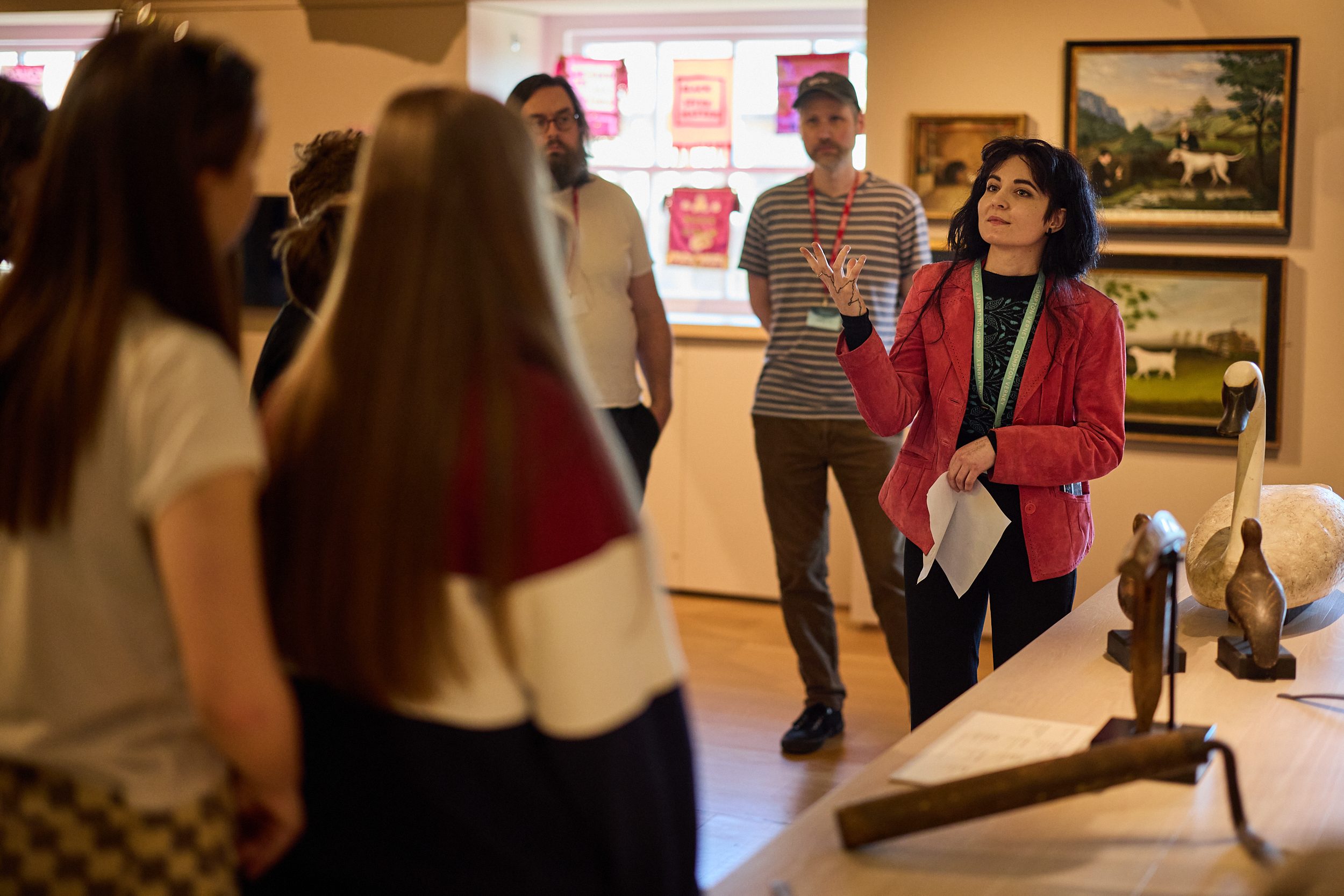
The story of Folk Art is everyone’s story.
Over the past year, we have been laying the groundwork for Folk Exchange.
In this first phase of the project, we’re curious to know: What does Folk Art mean to you?
We are including new work and questions across the galleries to better understand and develop this unique Folk Art collection.
We want to explore how these objects connect to diverse histories of making, and to people’s lives today.

What is “folk”?
One of the most challenging – and exciting – aspects of this project is just how vast the realm of folk can be. Folk conjures varied associations, from traditional customs of rural Britain, to music that galvanises social movements.
Folk can describe the hand-made and home-grown, such as the work of self-taught and trade makers as displayed in these galleries. It can also be found in the traces of our everyday life and the communities around us.
Why it appeals to me
What first drew me to folk art is its democratising function, a kind of creativity embedded in living, surviving, connecting, celebrating.
It has no time for art world hierarchies, and to me this only increases its power to affect us.
Folk Art is made by ordinary people and the work in our collection shows the creativity of a spectrum of makers who are working class, conflict affected, incarcerated, disabled, neurodivergent and chronically ill, as well as hobbyists and activists.
The creative knowledge of the people can be passed down through generations, while travel and migration bring new ideas and skills.
The Folk Exchange project at Compton Verney seeks to encompass the crafts and customs of communities who have been excluded from the collection previously, but who are integral to the landscape and cultural heritage of Britain.
The story of Folk Exchange so far
The research for this project has been enriched by various areas of knowledge which may not always appear under the banner of folk, for example exploring Ancestral Avant Gardes at a symposium organised by Professor Claire Bishop, or unpacking the subject of Prisoner Arts at a conference convened at the University of Warwick.
We have been visiting, learning from and connecting with arts and cultural projects across Britain.
Mapping an initial sketch of the terrain of “Folk Art” has taken me across the land, from the English Folk Dance and Song Society in London, to Middlesbrough Institute of Modern Art, from established museums such as the Museum of Rural Life in Reading, to emerging or peripatetic projects such as the Museum of British Folklore, the Museum of Youth Culture, and the Gallery of Everything.
Looking ahead
Ideas of folk are ever changing and shifting. The works in our Folk Art gallery were made during a period of intense industrialisation. Since then, processes of globalisation and the rise of the internet have expanded the realm of self-taught making.
Folk Exchange will open new dialogues, revealing hidden and new forms of creative folk culture.
These may be visual objects or living forms such as festival, song, dance, story, healing, cooking and sharing food, or other forms as yet unknown.
We are all makers – whether we knit, garden, graffiti or make video games. But why do we make things? And who do we learn from?
I hope you’ll join in as we reimagine a Folk Art that speaks to all of us.